By Craig Malisow
Houston Press
May 21, 2009
http://www.houstonpress.com/2009-05-21/news/don-t-ask-don-t-tell/
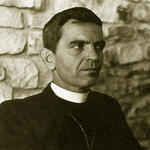 |
| Although the diocese states that Tucker (pictured circa 1968) abused boys at St. Stephen's in Austin, and possibly St. James in Houston, he has never been charged criminally. |
For 40 years, the Episcopal Church of Texas turned a blind eye to a priest who was sexually molesting male students.
In 1993, Bob Haslanger received a letter from his high school alma mater, St. Stephen's Episcopal School in Austin. It seemed that Haslanger, who was living in Seattle, had been designated a "never-giver," which, as the label suggests, is a category of alumni who have never donated to the school. Why was this, the school wanted to know.
"I wrote them back a letter and said, 'Is this a bullshit letter or is this something that you're actually interested in?'" Haslanger says, 16 years later. "Because if you're actually interested in why I'm a never-giver, I will tell you.'"
So, Haslanger says, he flew to Austin and sat down with an administrator named Jim Woodruff. Haslanger proceeded to give what he felt was an understandable explanation for his unopened pocketbook: Between the years 1964-1968, when he attended St. Stephen's, a faculty member came into his dorm room about once a month, after lights-out, and molested him. Haslanger told Woodruff that he told the school's headmaster about that person, and the headmaster called him a liar. Now, according to Haslanger's account, here's where it got weird.
"I became too emotional to say anything when he asked me who had molested me," Haslanger says from Seattle, where he still lives. "And he asked me — he asked me — 'Was it Jim Tucker?' I didn't provide Jim Tucker's name. He provided Jim Tucker's name."
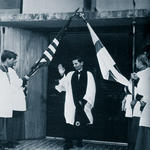 |
| As school chaplain, Tucker was an important part of graduation ceremonies, such as this one from 1968. |
It blew Haslanger away that Woodruff would immediately bring up the name of the school's wildly popular chaplain, the Reverend James Lydell Tucker.
Haslanger says he asked Woodruff if he was the only one who had ever alleged such abuse. According to Haslanger, Woodruff said the school had no information on that matter.
"Well, how the hell did he know that Jim Tucker was the person I was talking about?" Haslanger says.
Still, Woodruff made a note of Haslanger's story and stuck it in his file. Haslanger flew home, figuring he'd explained fairly well why he was a never-giver. He didn't expect to hear from the school again.
But, of course, he did, about two years later. And this was the letter that sent him over the edge. This was the letter that would disturb him so much that he took a leave of absence from his six-figure job as chief operating officer of a manufacturing company, which wound up being a permanent leave. This was the letter that unraveled all the effort that had gone into kicking self-medication with drugs and drink, and wiped away all the help he had received in therapy: The school wanted Haslanger to contribute to a new scholarship in the Reverend Jim Tucker's name.
Before he started spiraling, Haslanger wrote letters to St. Stephen's and to the Episcopal Diocese of Texas, here in Houston.
"I wrote them a letter, and I said, 'That's a big mistake. You guys are going to get bit in the ass for starting a scholarship in Jim Tucker's name,'" Haslanger says.
This warning was summarily ignored. A single accusation of child molestation was not going to gum up the gears of the fund-raising machine.
But about ten years later, another accusation surfaced. And another. And then another, this one from the Episcopal church and school in Houston where Tucker worked after St. Stephen's.
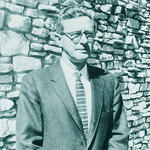 |
| A diocesan-commissioned investigation revealed that Headmaster Becker knew about the abuse at least as early as 1966 and did nothing to stop it. |
That's when the Episcopal Diocese of Texas went back and looked at Woodruff's notes from his 1993 talk with Haslanger. And that's when diocesan officials figured they had a problem on their hands: It looked like, for the past 40 years, a series of diocesan and school authorities had conspired to cover up allegations of sexual abuse. Now the school and diocese are facing a $45 million lawsuit for that cover-up. And now, say Haslanger and the other two plaintiffs, the diocese is abusing them all over again.
_____________________
Although the area is now fairly well developed, when St. Stephen's opened its doors in west Austin in 1950, it was fairly isolated.
"The school site eight miles from Austin was chosen because of its proximity to the University of Texas and the seat of state government, as well as its remoteness from the corruption of city life," according to the school's Web site. "A look at vintage photos reveals the wilderness quality of the sparsely populated Hill Country location in the early years. When the founders purchased the 400-acre tract, they took on the daily struggle of living in a no-frills rural setting. Their neighbors were goats, cattle and a variety of critters. Water was pumped from a 1,017-foot well. The only telephone was a mobile unit in an old car. When incoming calls caused the horn to honk, someone had to go outside to the car to answer."
When the three plaintiffs in the lawsuit came to St. Stephen's in the mid-to-late '60s, the area hadn't changed much. You could walk for a mile before you bumped into a farmhouse. Once or twice a week, students could catch a ride with a faculty member, or maybe take a school bus, to town. Being out in the sticks reinforced the sense of family. And for many students, there was no more beloved family member than the school's chaplain, the Reverend James Lydell Tucker.
In his ten years at the school (1958-1968), Tucker was considered by many students to be a friend and confidant. If you got in trouble and the administration was breathing down your neck, Tucker was your ally. Especially if you were a boy. He oversaw the student lounge, where you could shoot pool or play ping-pong. The especially lucky boys would be tapped to run the lounge's canteen, where you could get ice cream and candy. Of course, the set-up was a pedophile's dream. It made grooming them for future sexual advances that much easier. What seemed to seal the deal, though, what made Tucker your real pal, was when he'd have boys over to his on-campus house, where they could watch TV in air-conditioned comfort. Even without students there, it was always a full house — Tucker had a wife and five kids — so there were certain places in the house you weren't allowed to go.
The trust Tucker built up with students during the day paid off for him at night. After lights-out, he'd stroll through the dorms, push through the saloon-style doors of different rooms and take a seat on the edge of a bed. As far as most students knew, Tucker just wanted to check in, see how your day went. See if you needed help with anything.
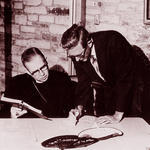 |
| The 2007 investigation did not turn up any records indicating if Headmaster Becker (right) told Bishop James Richardson of the abuse. |
It's difficult to tell when Tucker became such an expert at his craft, but by the time he slipped into Bob Haslanger's room in 1964, he could sit there telling stories in the pitch-black, with other boys in the room, stroking Haslanger's penis without anyone else knowing what was going on. And that was that. Get up and leave. See you boys at the canteen.
Whenever it happened, Haslanger would check out of his mind. He'd go somewhere else.
"The world was a bizarre place," he says. "...Having to deal with this person who was perhaps the most popular faculty member on campus in public, who acted as though nothing was odd, and then once a month or more, he would come into my room and molest me. Well, wow, that's more than my little young teenage brain could handle."
Haslanger's grades started slipping, and although he won't go into detail, he said he started having disciplinary problems as well. He and his faculty adviser reached an impasse. Neither of them knew how to turn things around. Then, all of a sudden, Haslanger got a new adviser. His name was Jim Tucker.
Haslanger says his only refuge during this time was the school's darkroom. Late in his freshman year, when he got involved in photography, he petitioned the administration to invest a few bucks in what he felt was a rather mediocre darkroom. By his sophomore year, the administration agreed. Haslanger couldn't give a damn about developing photographs. He wanted to experience, even for just a little while, the safe feeling that came with a locked door.
"I created a place there at the school that was my own space, and it was dark and it was quiet and it was private," he says.
Something else happened during his sophomore year: He worked up the nerve to tell Headmaster Allen Becker about Tucker. It happened, Haslanger says, when he was called to Becker's office once again for some violation.
"I started to tell him that Tucker came into my room at night and 'messed with me,' I think is the phrase I used," Haslanger says. "...And he called me a liar. He asked me, 'Why can't you tell me the truth?'" Looking back on it now, Haslanger says, "It's odd that he would take my phrase, which was sort of ambiguous, and immediately assume that there was some lie encased in it."
And with that, Haslanger walked out of Becker's office, consigned to two more years of depravity.
_____________________
During a July 2007 Houston Press interview about the allegations against Tucker, diocese spokeswoman Carol Barnwell chuckled over the idea of a "conspiracy." How ludicrous.
Either Barnwell wasn't being candid, or her boss didn't fill her in on the fact that the diocese had hired a risk analysis company to investigate the allegations and had, three months earlier, outlined clear evidence that there was in fact a conspiracy among St. Stephen's and diocesan authorities. And, in September 2007, the diocese released a summary of that investigation, which substantiated Haslanger's claim that he told Becker about the abuse in 1966, and that Becker did nothing.
Instead, Becker's response to continued allegations was to tell the St. Stephen's community that Tucker had heart disease and was leaving Austin for St. James Episcopal Church in Houston. Apparently, this satisfied everyone — no one questioned why Houston was better for his heart than Austin.
Then again, Becker's word was gold, especially among the more progressive families who sent their children to St. Stephen's. According to a 2000 article in Focus on St. Stephen's (an alumni publication), when Becker "was offered the position of headmaster [in 1957], he accepted on one condition — that the school 'remove race as a criterion for admission.'" The school had long been coeducational, but, reflective of the time, the school's trustees found the idea of black students studying alongside white students unpalatable.
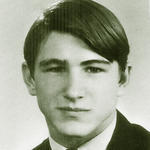 |
| David Evert, pictured around 1968, says he and others told Becker about the abuse so it wouldn't happen to younger students. |
After some heated debate, the Diocesan Council and the trustees agreed to integrate the school within five years. Becker told Focus on St. Stephen's, "My wife Elizabeth and I decided we could live with it, but we didn't like it."
Two years into that timetable, Becker submitted a resolution to the trustees: "Because this is a Christian institution of education, laboring under both the high privileges and clear responsibilities of our vocation, be it resolved that this school will admit any duly qualified student."
Although his insistence on integration was no doubt a headache for the more conservative faction of the school and diocese at the time, Becker is now recognized as a pioneer who helped drag the school into enlightenment. Which is one more reason why, as will soon be explained, the way he handled the Jim Tucker situation is simply heartbreaking.
_____________________
Even before David Evert started classes at St. Stephen's in 1967, he knew from his older brother that Tucker was someone special.
"He had a reputation already in my mind from my brother, because my brother had such a good relationship with him," Evert tells the Press from his home in Monterey, California.
Evert grew up in Spring Branch, where his family attended St. Christopher's Episcopal Church. He felt fortunate to be able to join St. Stephen's in his sophomore year; he looked up to his older brother, and he was glad to follow in his footsteps.
It didn't take long before Evert saw firsthand what his brother was talking about. Tucker was someone he and all the students could trust. He was so open and caring, it seemed like you could talk to him about anything. He would come to your room at night, after lights-out, and just talk. It was important to have someone like that when you were away from your family. So Evert was ecstatic when he was one of the boys Tucker picked for an upcoming trip to Africa. Tucker had been a missionary there before he started at St. Stephen's, and he wanted to show the boys all the good that could be done over there.
Evert's room became the center of attention one night, because Tucker had walked in, sat on the edge of his bed and started in on one of his Africa stories. Word got out, and other boys trickled into the room. They sat there in the black and listened to stories of that exotic land.
That's when, Evert says, he felt Tucker's hand under the covers. Then he felt Tucker's fingers wrap around his penis. Tucker masturbated Evert until he ejaculated in his hand.
"He does all this and doesn't even break stride with his story," Evert says.
Then Tucker grabbed Evert's hand. The priest wanted the boy to reciprocate. But Evert pulled away, and after a moment, Tucker left.
"He leaves the room, and I'm a different person now," Evert says.
For the next two or three weeks, Evert went through the motions of campus life in a daze. He felt like he was on another planet. His thoughts were a sickening mixture of shame, embarrassment and disbelief. He'd constantly ask himself why he let it happen. Sitting in church, listening to Tucker preach, Evert felt like he was going insane. He needed to quiet his brain.
So he went to the campus store and bought a bottle of Dramamine. He swallowed 18.
"I can't say rationally whether that was a suicide attempt," Evert says. "...I'm afraid to think about it, actually."
Whatever he thought he was doing, it didn't work. When he came to, he was still on that other planet. Finally, one night, after lights-out, feeling like he was going to crumble, he walked into a friend's room, where three boys were having a bull session, and he just blurted it out. He didn't even know if anyone would believe him — how could they? — but he had to get it off his chest.
That's when the boy who would go on to become the third plaintiff in the lawsuit spoke up. He asked to be identified for this story as "Don."
"I sat there for a moment — you can imagine your embarrassment, right?" Don tells the Press. "But I couldn't leave my friend out there to hang in the wind, because he was really distraught...and so I said, 'Yeah, it happened to me.' And it kind of took a burden off of you, too, at the same time, because you wanted to tell people, but you didn't want to tell people, because who's going to believe you?"
Don had started St. Stephen's in eighth grade, and eventually he, too, became Tucker's prey. And like Evert, he had been trying to lock it all away, trying to find a vault in his brain where he could seal away this horrible thing forever.
As soon as Evert and Don realized they hadn't been the only ones, they felt so much stronger. Some of that self-doubt evaporated, and now, sitting there in the dark, they realized that other students' well-being could be at stake. They were especially worried about the eighth and ninth graders, the new batch of boys being groomed at the canteen.
It was around midnight when they left the dorm and headed to Headmaster Becker's house. They knocked on the door, and Becker's wife let them in. Then Becker appeared and offered the boys seats on the couch. That's when Evert spoke up, followed by Don.
"The headmaster had very little to say," Evert says, "...[but] the first thing he said was...something to the effect of, 'I was expecting this.'"
The boys didn't know what that meant. They just sat quietly.
"He said we weren't to tell anyone about this, not even our parents," Evert says. "And that's about all he said to us. And we walked out of there feeling like we had done our duty."
Shortly after that, the boys learned that Tucker was leaving St. Stephen's. Heart problems. As far as they were concerned, Becker had lived up to his word. Tucker would no longer be able to hurt any boys at St. Stephen's.
Becker wouldn't comment for this story, so it's unclear why he chose to "deal" with the matter in 1968, as opposed to 1966 — or whenever it was that he first knew the truth. It's unclear whether, after hearing from Evert and Don, he thought about his own son, Stephen, who was nine years old then. Maybe Becker never felt he had to worry about Stephen before, since he probably wasn't old enough for Tucker's taste. Was he thinking about the day when his son would be that age?
Whatever his reasons, Becker wanted to wash his hands of the matter. And he wanted to do it in a way that would not bring undue attention to St. Stephen's. Something like that could cost people their jobs and could cost the school money. It might taint his reputation as The Great White Hope, the man who had fought so hard to open St. Stephen's doors to African Americans. So, in 1968, he quietly shoved Tucker out the door.
Two years later, Tucker became the rector of St. James in Houston, a church and school on Southmore Boulevard whose congregants were mostly African-American, and mostly below the socioeconomic strata of St. Stephen's. When the diocese sent Tucker to St. James, Becker didn't sound the alarm. He did nothing.
For the next 20 years, a congregation of black Episcopalians was stuck with a predator. And Becker got to keep his good name._____________________
Nothing shuts up men of God like a lawsuit.
When they're fund-raising, they point to all the good work they're doing in Jesus's name. But the truth, the way and the light crumble under the weight of a civil complaint. Being on God's side no longer cuts it. No, for that, you need lawyers.
Jim Tucker, who retired in 1994, would not comment for this story. Nor would Jim Woodruff. Nor would Fred Weissbach, the headmaster of St. Stephen's at the time Haslanger informed the school of the abuse. Bishop Don Wimberly wouldn't talk. Neither would Bishop Coadjutor Andy Doyle.
When the Press asked Chris Phillips, the attorney representing St. Stephen's, to expound on his response to the suit, Phillips said he couldn't comment on confidential matters — even though both the plaintiffs' complaint and the school's answer are public records.
Phillips's filing admits that "Tucker engaged in inappropriate sexual activities with male children at St. Stephen's School." It states that "Plaintiffs were sexually molested by Defendant Tucker while students at St. Stephen's Episcopal School."
But the curious thing is the assertion that "Tucker was not acting in the course or scope of employment with St. Stephen's Episcopal Church" when the abuse occurred. Ostensibly, this means that nowhere in Tucker's job description did it say that part of his job was to jerk off teenage boys. However, Tucker worked one-on-one with students, and it was no secret that he made rounds through the dorms after lights-out. It was also no secret he had boys over to his on-campus home. He oversaw the canteen, which put him in even further contact with boys. And the boys lived on school grounds, in a school dorm, away from their parents. Tucker never had to break into a home. He never had to shuttle a victim off campus. They were all right there in the open, ripe for the picking.
Surprisingly, much of the evidence showing who knew what and when they knew it came from the diocese itself. The information came from the Arlington-based Praesidium, a risk-management company that works with many religious organizations. The investigation lasted from May 2006 to April 2007, and while the diocese never released it, and while it's been sealed as part of the lawsuit, the diocese released a timeline of events in September 2007, explaining how these accusations ultimately saw the light of day.
During a class reunion party in 2005, according to the timeline, "a story was told among several alumni about the Reverend James L. Tucker's sexual abuse of students." These alumni included a former trustee, who ultimately reported it to the chairman of the school's board in April 2006, and then to the head of the school, the Reverend Roger Bowen.
"After further research and discussion with others, Bowen followed Diocese of Texas policy and notified [Bishop Don Wimberly] in May of 2006."
Per the timeline, Wimberly asked Bowen to speak with Andy Doyle, who was then Canon to the Ordinary. Doyle ordered the Praesidium investigation.
The timeline states the following:
• Becker did not remember Haslanger's 1966 complaint, but he confirmed the 1968 complaints by Evert and Don.
• A St. Stephen's administrator (likely Woodruff) reported Haslanger's initial complaint to then-Headmaster Fred Weissbach in 1993. There is no evidence Weissbach reported the complaint to the diocese at that time.
• In 1996, Weissbach reported Haslanger's second complaint to then-Bishop Claude Payne.
• In early 2007, the diocese reported the allegations to the Travis County District Attorney and the Houston Police Department.
• The diocese then sent letters to former St. Stephen's and St. James faculty and students, notifying them of the allegations. The letters asked anyone having information about the allegations to notify the diocese.
And then, the kicker: "As a result of these communications, the diocese received reports from five additional former St. Stephen's students who alleged they were abused as minors or subjected to inappropriate sexual overtures dating back to the 1962-1963 school year."
It continues: "Canon Doyle was also contacted by one former St. James student, who reported that Tucker had sexually abused him. This individual told Canon Doyle that he had made a complaint in 1994, shortly after Tucker retired, to Bishop Bill Sterling (deceased). He said he had been provided with counseling and given assurances that Tucker was no longer going to be allowed to function as a priest." While the diocese confirmed that Sterling received that complaint, "There are no records that Bishop Sterling ever reported the complaint to anyone else at the Diocese." The four-decade interim between the abuse and the investigation proved an inconvenience. The timeline states: "Unfortunately, many who were with the Diocese at the time are now deceased. There is no information of what, if anything, was communicated by Becker to then-Bishop [James] Milton Richardson (deceased) in 1968."
In February 2008, an Ecclesiastical Court in Houston found Tucker guilty of "sexual misconduct," and he was subsequently defrocked. Tucker never showed to defend himself.
During the Praesidium investigation, the three plaintiffs say, Doyle and Wimberly seemed sincere in their promises to right decades of wrong. But when the men asked the diocese to pay for future therapy, they say, the school and the diocese responded by hiring lawyers.
The diocese hired Vinson & Elkins, Houston's go-to firm for priest molestation lawsuits. As attorneys for that firm have argued in cases for the Catholic Archdiocese of Galveston-Houston, the first volley in this case was to get U.S. District Court Judge Janice Jack to dismiss it on the grounds that the claims were well past the expiration date dictated by the statute of limitations. And, as has happened in the Catholic abuse cases, Jack denied that motion and accepted the plaintiffs' lawyers' argument that the men were of "unsound mind" as a result of the abuse, and therefore not bound by the statute of limitations.
Moreover, in speaking with the diocese's attorney, Shadow Sloan, in a November 2008 pretrial hearing, Jack seemed to express her incredulity over the facts of the case.
Jack: "So the diocese kept [Tucker] in a position after a report of pedophilia, kept him in a position where he would interact with children from that point on until he was defrocked or something last year?"
Sloan: "Your Honor, again, this happened in 1968 —"
Jack: "I understand. Just answer my question."
Sloan: "The answer would be yes."
—
Jack: "He didn't even go with any warning from diocese to diocese?"
Sloan: "Not in 1968, Your Honor."
Jack: "Well, ever, in the 40 years until he was defrocked?"
—
And, after learning that Tucker was sent to St. James, where he worked with much younger children, Jack said: "You know, it reminded me of somebody that I had in here, a defendant one time, that when the children — fifth and sixth graders — complained, and the parents came and complained about inappropriate touching, they did a little adjustment...and put him with first graders, who were a little bit young to complain."
—
The plaintiffs say that, when they asked the diocese to pay for future therapy, the response was: Hey, we're Episcopalians — we don't have Catholic Church money.
The men and their lawyers wouldn't say how much they initially asked the diocese for, but it was probably less than the $45 million they now seek.
"We have heard, 'We want to do the right thing' repeatedly out of the mouth of...Bishop Wimberly and out of Doyle's mouth," Haslanger says. "...And then what they do is, they tell us they're going to depose our wives [and] they sent deposition requests to my pastor for my conversations with her. They're going at this in a very, very nasty way, and they're pretending on the surface to be such sweet and moral people. I don't see much morality in what they're doing....They're not acting in the way that we were taught at St. Stephen's to be moral. They have hidden this for 40 years, and right now they're doing everything they can do to confuse, obfuscate and to use the legal technicalities to avoid their responsibility."
All three say they've made relative peace with what they say — and what the diocese confirms — Tucker did to them. For them, the real abuse was the cover-up. Telling three boys who were violated not to tell anyone, not even their parents.
"I have no kind of feelings of anger towards Tucker," Evert says. "...In my mind, I can kind of understand that he has a sickness, you know....I have more anger towards Dr. Becker, who covered this thing up, and these people at diocese who want to just say, 'Gosh, we're sorry, but we don't have any money.'"
Perhaps, though, the plaintiffs are to blame for all of this. After all, if they had simply listened to Becker's admonition not to tell a soul, the diocese wouldn't be in this awful position of having to fight to save its money. And even in its apology for the whole mess, the diocese felt it necessary to point out that many Houston and Austin Episcopalians can't understand why grown men would complain about something that happened to them when they were kids. As the diocese states in its coda to the timeline of Tucker's abuse, "some have criticized the Diocese for pursuing these decades-old allegations."
Maybe all those critics have a point. If their grown children came to them in 2009 and said they had been molested by an Episcopalian priest in 1966, and the diocese knew about it for years and actively concealed the information, would these parents really expect the diocese to give them money? Would Bishop Doyle expect the diocese to pay if, 40 years from now, his two young daughters came to him with the same news? What would Wimberly tell his two children if they said the same thing?
"Our lawsuit is not about molestation," Haslanger says. "Our lawsuit is about the conspiracy of the school and the diocese to keep this quiet, and to have kept it quiet for 40 years. And their attempt right now to make it all seem like it's Tucker's fault, and none of theirs."
And he also says this: "We may have been molested by Tucker. But we were abused by the church and the school."
Editor's Note: In the interests of full disclosure. Houston Press Editor Margaret Downing and her family did attend the Reverend Tucker's church for two years in Houston. That was not at the time of the events described in this story.
Contact: craig.malisow@houstonpress.com
Any original material on these pages is copyright © BishopAccountability.org 2004. Reproduce freely with attribution.